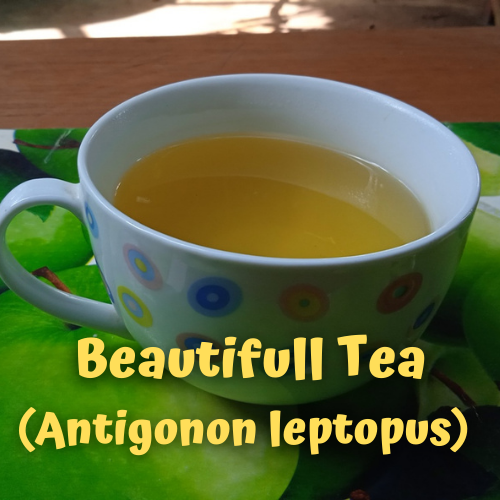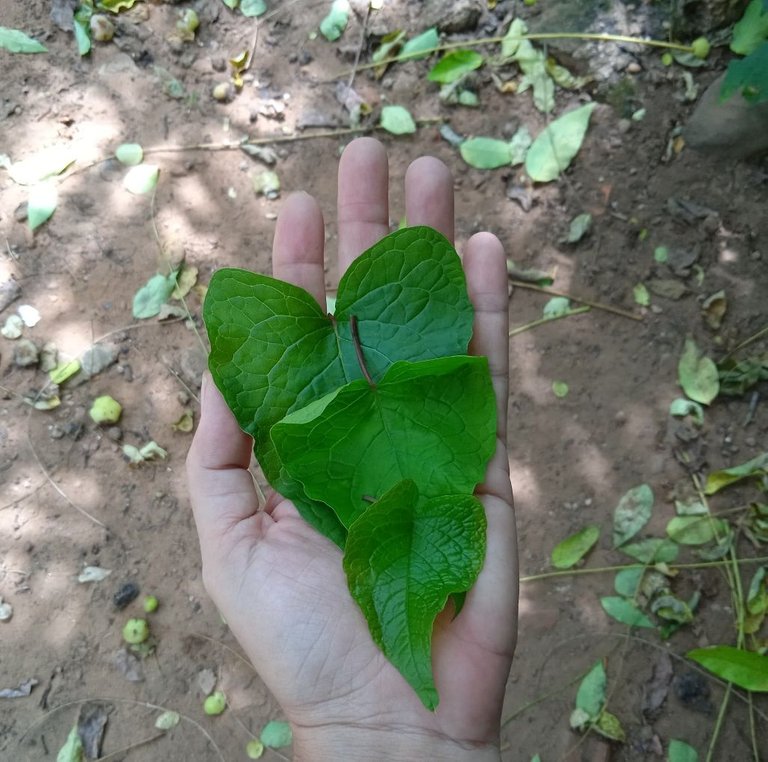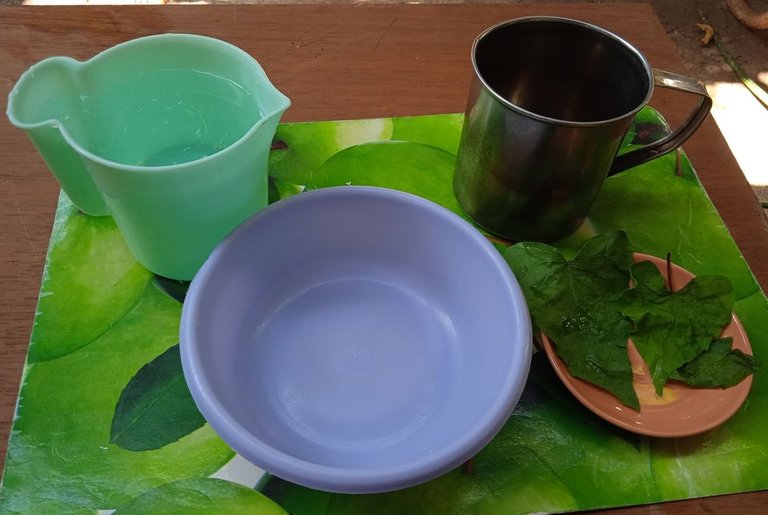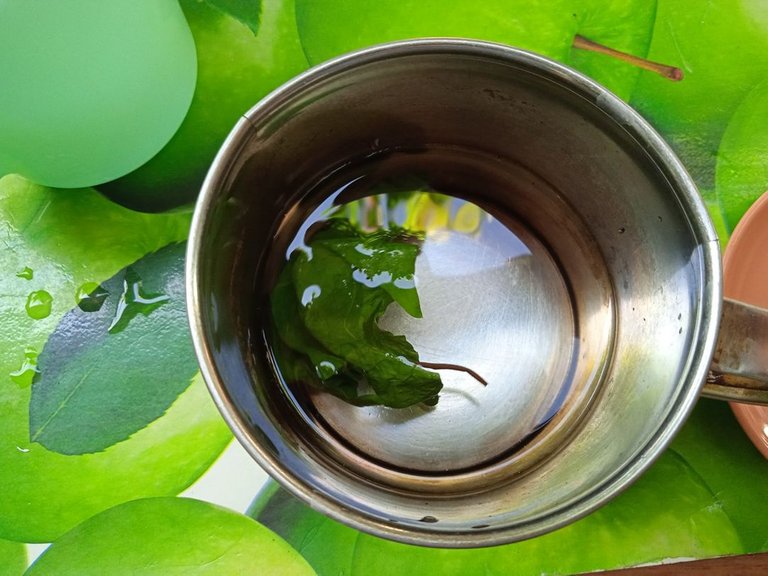ENGLISH
Beautifull Tea


- According to Lara-Cortés, Osorio-Díaz, Jiménez-Aparicio and Bautista-Baños, (2013), the extract of the flowers of this species: "exhibited a number of possible health-enhancing properties, such as suppression of cancer cell proliferation associated with the human digestion system and inhibition of α-glucosidase and lipase enzymes." (p. 2); meaning, they may be useful as a preventive and/or adjuvant in the treatment of cancer in the digestive system, for hyperglycemia and cardiovascular disease.
- Vit, (2002), indicates that this plant has nutritional potential, since he refers that: "In Mexico its tuberous roots are edible" (p. 48), being used as an ingredient in some traditional dishes of that nation, for its contribution in vitamins and minerals.
- Likewise Telma, (2011), points out that according to the customs of the Yucatan region in Mexico, this plant offers the following medicinal benefits:
"It has several medicinal uses: tea from the aerial parts of the plant (leaves, branches and flowers) is used to cure colds, coughs and inflamed throat; it is anti-inflammatory, analgesic, anti-diabetic (lowers blood sugar), emmenagogue (to lower menstruation). The tea is prepared with a branch of fifteen cm. for a liter of water or a few flowers for two liters and is drunk as water for use. In baths, the decoction of the plant is used to reduce fever. It is also useful against venereal diseases. (p. 2)






- The first thing to do is to collect the leaves, in this case I collected directly from one of the plants, three leaves of different sizes (small, medium, large), and then proceed to wash them with clean water.






- Once cleaned, proceed to boil them for 5 minutes in 250 cc of drinking water.




- We strain and serve the tea in a cup, wait for it to reach room temperature and ingest. I must say that its flavor is very mild and pleasant. Currently I have a month consuming this tea, with a frequency of twice weekly, I am cautious in its consumption because I do not fully know its effects..





De acuerdo a Lara-Cortés, Osorio-Díaz, Jiménez-Aparicio y Bautista-Baños, (2013), el extracto de las flores de esta especie: “exhibieron una serie de posibles propiedades que mejoran la salud, tales como la supresión de la proliferación de células cancerosas asociadas con el sistema de la digestión humana y la inhibición de la α-glucosidasa y las enzimas lipasa.” (p. 2); lo cual quiere decir, que pueden ser útiles como preventivo y/o coadyuvante en el tratamiento del cáncer en el sistema digestivo, para la hiperglicemia y enfermedades cardiovasculares.
Por su parte Vit, (2002), indica que esta planta tiene un potencial alimenticio, ya que refiere que: “En México sus raíces tuberosas son comestibles” (p. 48), utilizándose como insumo de algunos platillos tradicionales de esa nación, por sus aportes en vitaminas y minerales.
Igualmente Telma, (2011), señala, que de acuerdo a las costumbres propias de la región de Yucatán en México, esta planta ofrece los siguientes beneficios medicinales:
“Tiene varios usos medicinales: el té de las partes aéreas de la planta (hojas, ramas y flores) se utiliza para curar los resfriados, la tos y garganta inflamada; es antiinflamatorio, analgésico, antidiabético (baja el azúcar de la sangre), emenagogo (para bajar la menstruación). Se prepara el té con una rama de quince cm. para un litro de agua o unas cuantas flores para dos litros y se bebe como agua de uso. En baños, se utiliza el cocimiento de la planta para bajar la fiebre. Útil también contra enfermedades venéreas. (p. 2)






- Lo primero que haremos es recolectar las hojas, en este caso yo recogí directamente de una de las plantas, tres hojas de tamaños diversos, (pequeña, mediana, grande), para luego proceder a lavarlas con agua limpia.






- Una vez limpias, procedemos a hervirlas por 5 minutos en 250 cc de agua potable.




- Colamos y servimos el té en una taza, esperamos a que alcance temperatura ambiente e ingerimos. Debo decir que su sabor es muy suave y agradable. Actualmente tengo un mes consumiendo este té, con una frecuencia de dos veces semanales, soy cauta en su consumo porque no conozco totalmente sus efectos.




REFERENCIAS BIBLIOGRÁFICAS Y DOCUMENTALES
BIBLIOGRAPHIC AND DOCUMENTARY REFERENCES
Telma, J. (2011) Plantas silvestres de Yucatán. Documento en línea. Disponible en:
Vit, P. (2002) Antigonon leptopus Hook & Arn. Ficha botánica de interés apícola en Venezuela, No. 4 Bellísima. REVISTA DE LA FACULTAD DE FARMACIA Vol. 44, 2002. Mérida, Venezuela.
Estas fotos son de mi autoría y fueron tomada con un teléfono Xiomi REDMI 8 A / These photos are my own and were taken with a Xiomi REDMI 8 A phone .
Los separadores utilizados, son cortesía de @eve66 quien comparte hermosos diseños que embellecen el maquetado de nuestros post. / The dividers used are courtesy of @eve66 who shares beautiful designs that embellish the layout of our post.
El diseño de portada incluido en esta publicación, han sido elaborado por mi persona con la aplicación CANVA / The cover design included in this publication has been made by me with the CANVA application.
He utilizado la aplicación Google Traslator para hacer la versión en idioma Inglés / I have used the Google Traslator application to make the language version.
En caso de que se requiera emplear el contenido o imágenes de este post y de mis otras publicaciones, agradecería se hiciera referencia a mi autoría (Fabiola Martínez) y se citara el link correspondiente. Gracias. / In the event that it is required to use the content or images of this post and my other publications, I would be grateful if my authorship (Fabiola Martínez) was made and the corresponding link was cited. Thank you.


 Powered by LOTUS token, an alternative health social currency on HIVE. Delegations welcome! Find our community here. DiscordIICuration Trail
Powered by LOTUS token, an alternative health social currency on HIVE. Delegations welcome! Find our community here. DiscordIICuration Trail
¡Muchas gracias por el apoyo!
Hola @sirenahippie ,me gusta leer lo cautelosa que eres con la planta ,es mejor así , las personas que leemos el post nos enteramos de las inmensas propiedades que tiene de acuerdo a tu investigación ,quienes desean hacer el té deben investigar más , y las flores son Bellísimas , tal vez su nombre tenga este origen , hay que ser cautelosos como dices ya que debemos investigar más .
Te deseo un feliz domingo
Muchas gracias por pasar a leer y comentar, es agradable ver un buen comentario. Sí, siempre debemos ser muy cautelosos con lo que no conocemos. Mis recetas anteriores de Medicina Natural, sí han sido comprobadas por mí ampliamente, y no tengo reparo en recomendarlas, siempre y cuando no exista una condición de salud subyacente que pueda generar más problemas o agravar uno existente. Esta planta la estoy investigando, ya que la conservé fundamentalmente por su valor alimenticio para las abejas, pero descubrí ventajas adicionales. Saludos y feliz semana.
Congratulations @sirenahippie! You have completed the following achievement on the Hive blockchain and have been rewarded with new badge(s):
Your next target is to reach 5000 comments.
You can view your badges on your board and compare yourself to others in the Ranking
If you no longer want to receive notifications, reply to this comment with the word
STOPTo support your work, I also upvoted your post!
Check out the last post from @hivebuzz:
Cada día se aprende algo nuevo, casualmente la semana pasada una amiga me había hablado de esta planta e incluso nos pusimos de acuerdo para su investigación, gracias por compartir tus investigaciones, bendiciones
Gracias por pasar a visitar mi blog @leslieq78. A veces sorprende lo que uno consigue al investigar sobre aquello que es cotidiano, y esta planta realmente me sorprendió. Saludos.
Excelente información @sirenahippie, una planta muy abundante por acá en Venezuela y que la verdad es que uno ni se imagina que puede aportar tanto para la salud. Gracias por compartir.😊
Hola @damarysvibra, gracias por la visita. Sí, muchas veces pensamos que las plantas que crecen de forma silvestre son malas yerbas, pero todas tienen su función en el ecosistema y pueden ser muy valiosas para los humanos. Que tengas buen día. Saludos.